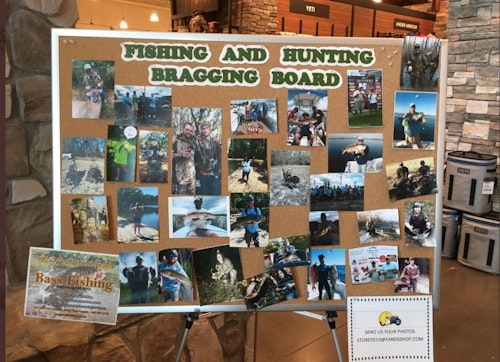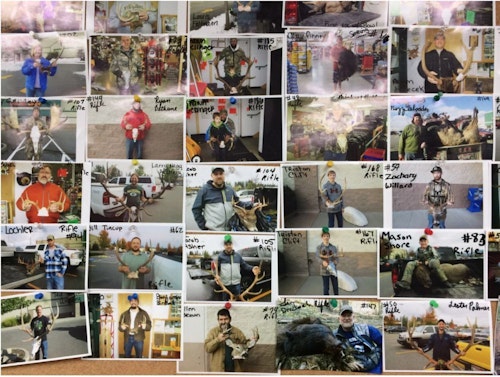Years ago, one of my favorite sitcoms was Cheers. During each episode, the beloved character Norm would say, “Afternoon, everybody” as he entered the bar. Then everyone in the establishment would yell, “Norm!”
While that scene probably doesn’t repeat itself daily in your hunting retail shop, chances are good you have some customers who visit weekly or even more often. It’s true a few of the regulars don’t spend much cash with you during the course of a year, but other repeat customers do drop a lot of money in your store. One reason for the many visits could be they enjoy talking with your sales staff. But they’re gaining hunting knowledge, too, either about local fields and forests, or far-off destinations known by your employees.
David vs. Goliath
Consumers today can purchase almost anything they desire online and have it delivered to their front door, often for no shipping charge, provided they spend more than a certain minimum. Your store is in competition with these online retailers as well as the big-box stores such as Walmart. Even though it’s difficult, perhaps impossible, to compete with these giants on price, you and your staff should have one thing the Goliaths don’t: hunting knowledge. How you capitalize on this advantage will largely determine the overall success of your business.
Let me give you an example.
Long before I became a full-time writer/editor, I worked in the fishing retail industry for seven years. I started on the sales floor for $3.35 an hour, which should give you some idea of time period. The tackle shop owners knew me a bit because I was a regular customer.
As an employee, I quickly learned that when I talked to customers, the one thing they wanted from me was advice on how to catch more and bigger fish. Sure, we discussed rods, reels, line, lures, electronics, you name it — but our discussions always revolved around what they needed to do differently to improve their success on the water.
Because I fished — a lot! — I was never short of advice. Customers were interested in hearing about my recent on-the-water experiences, and, of course, they wanted to know which lures and techniques I used to catch my fish. These were the old days, so I couldn’t show them smartphone pics for evidence. But our shop had a “bragging board” we updated regularly with color prints from customers and staff.
Generally, a customer interaction would proceed as follows: I’d greet the person by his or her first name (Norm!) as they came through the front door. Sure, I didn’t know their name when I first started working, but I made it a point to get good at this task quickly. They would typically ask, “How’s fishin’?” and I’d give them a quick rundown on my most recent trip or two. In almost every case, they’d ask to see which specific lures I used to catch my fish.
As I pulled lures off the pegs and handed them to the customer while talking about specific retrieves and tips, it was rare for these lures to be handed back or hung back on the wall. The customer wanted that specific lure for their tacklebox. Often, they’d ask for my next two or three favorite colors, too.
My goal as a salesman wasn’t to make the cash register sing — I simply wanted the customer to catch more and bigger fish. Sure, having the right lures and necessary rods, reels and line was important to their success. But they were also getting valuable fishing tips from me — something they couldn’t get down the road at Walmart or online.
Customers also learned they could trust me. When I caught largemouth bass on a particular black-and-blue jig, but the store was out of stock, I pointed to the empty peg — and apologized that we didn’t have them. Not only did customers appreciate my honesty, but quite often they’d buy the next closest color we had available, then ask me to set aside a couple of the “right color” when our next shipment arrived. Of course, I was happy to do so.
Hunting Is Good for the Soul — and Sales
The next best thing to actually hunting is talking about hunting, so be sure your sales staff is getting in the field as much as possible to gain valuable experience. Encourage them to humbly share their hunting successes with customers. No one wants to talk to a “know it all,” so be sure the in-store conversations between sales members and customers is a true give and take.
On those days when Norm tags a buck, or shoots a few pheasants or ducks, be sure to ask for a photo and then print/post it on your store’s bragging board for everyone to see. Include a brief gear list from the hunt, too. That way, other customers can decide whether they need to add something special to their equipment room. Finally, be sure to include staff pics, and perhaps a short bio for each employee, on the same bragging board.








